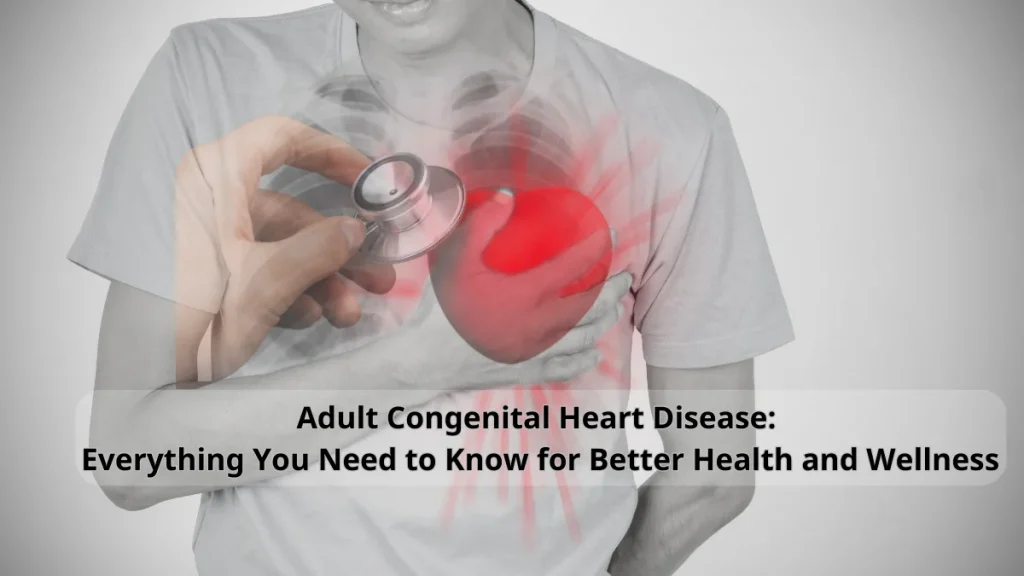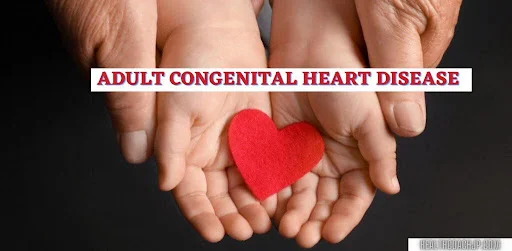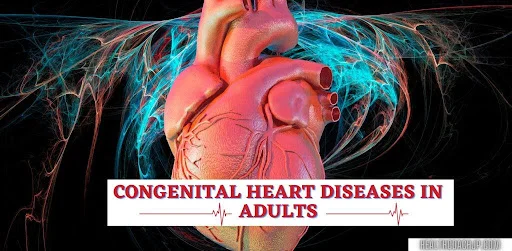Approx. one million people over the age of 20 suffer from congenital heart disease and sometimes these adult patients slip through the loopholes in the medical system. Adult congenital heart disease, All the information you need to know! Approx. one million people over the age of 20 suffer from congenital heart disease and sometimes these adult patients slip through the loopholes in the medical systems which makes the diagnosis difficult for cardiologists.

Moreover, many of the patients are very old. They cannot be cared for in pediatric institutions by pediatric cardiologists and sadly, most adult cardiologists are not well-trained in congenital heart disease. Therefore, it is important to identify the common lesions in adult congenital heart disease and how they should be managed.
Adult Congenital Heart Disease
Talking about a type of adult congenital heart disease, acyanotic congenital involves left-to-right shunts, such as atrial septal defect, and obstructive lesions such as aortic coarctation of the aorta. Tetralogy of Fallot is the most common form of cyanotic congenital heart disease in adults. Other complex conditions seen in adults include corrected transposition of the great vessels, univentricular hearts, and lastly Ebstein’s anomaly of the tricuspid valve.

Most patients with congenital heart disease will need surgery and some interventions like catheterization, or catheterization. The results of these surgeries and interventions are excellent in the adult population. There is a need for Long-term follow-up for any adult congenital heart patient receiving care in institutions that are well-organized and well-equipped.
5 congenital heart diseases in adults
1. ATRIAL SEPTAL DEFLECT
If someone internally excludes a bicuspid aortic valve and does not consider mitral valve prolapse a congenital lesion, an Atrial Septal Defect (ASD) is the most common cause of adult congenital heart disease. ASDs account for approximately ten to fifteen percent of all cardiac defects and are found more commonly in women than men with a ratio of 2:1. The three major forms of ASDs are ostium secundum, which makes up Sixty-six to seventy-five percent of all ASDs; the ostium primum type (partial atrioventricular canal or partial endocardial cushion defect) making up 15 to 20 percent. The sinus venosus type comprises 5 to 10 percent of all ASDs.
2. VENTRICULAR SEPTAL DEFECT
Ventricular septal defect (VSD) is the most common cardiac defect in children and occurs in approximately 30 percent of pediatric patients with adult congenital heart disease. It is much less common in adult patients with congenital heart disease and affects approximately 10 percent.
Patients with a VSD, unlike the patients having ASDs, present with a volume-loaded left heart with progressive enlargement of the left atrium and the left ventricle. They have increased vascularity and a holosystolic murmur along the left-mid-/left-lower sternal border.
3. PATENT DUCTUS ARTERIOSIS
Ductus occurs more frequently in females and is similar to ASDs. As in VSD patients, the PDA presents an extended load of the left heart. Patients having PDA present with a continuous “machinery murmur” at the left upper sternal border because aortic pressure is almost always greater than pulmonary pressure both in diastole and systole.
4. EBESTEIN ANOMALY
It is a downward displacement of the tricuspid valve atrializing a portion of the right ventricle. Some adult patients with this disease present with severe tricuspid regurgitation. Others will present with cyanosis with an exercise that will be secondary to a right-to-left shunted atrial level.
5. CORRECTED TRANSPOSITION
Corrected transposition is a ventricular inversion with an aorta anterior to the left; thus the blood enters a morphologic right atrium and passes a morphologic mitral valve into the right-sided anatomic left ventricle. The blood then passes to the pulmonary artery but returns from the lungs into a morphologic left atrium, and crosses a morphologic tricuspid valve into a left-sided anatomic right ventricle, which is connected to the aorta.
Congenital Heart Disease
There are two types of congenital heart disease. Cyanotic congenital heart defects and acyanotic congenital heart defects. They are very different from each other.

Congenital heart disease awareness
According to cdc.gov, during February 7-14 Congenital Heart Disease Awareness Week is celebrated. It is mainly organized to promote awareness and educate people about congenital heart defects. CHDs influence around one out of 100 births each year in the United States and are the most well-known sort of birth deformity (1,2). Heart defects are conditions that people live with for the duration of their carries; an expected 1 million kids and 1.4 million grown-ups in the United States were living with a CHD in 2010. CDC’s site, Stories: Living with Heart Defects, incorporates individual stories by people influenced by CHDs.
American Heart Association Foundation
The American Heart Association Foundation is a not-for-profit association in the United States that supports cardiovascular clinical examination. It teaches purchasers about solid living and cultivates fitting heart care with an end goal of lessening incapacity and passing brought about via cardiovascular illness and stroke. Initially shaped in New York City in 1924 as the Association for the Prevention and Relief of Heart Disease. It is right now settled in Dallas, Texas. The American Heart Association is a public intentional well-being office. Hope you like our article on adult congenital heart disease, All the information you need to know! Share for more valuable articles.
Frequently Asked Questions (FAQs) about Adult Congenital Heart Disease
Q: What is the common congenital heart disease in adults?
A: The most common congenital heart disease in adults is a ventricular septal defect, which is a hole between the two lower chambers of the heart.
Q: What are the 5 main types of congenital heart disease?
A: The five main types of congenital heart disease are: atrial septal defect, ventricular septal defect, patent ductus arteriosus, tetralogy of Fallot, and transposition of the great arteries.
Q: What are the 4 types of congenital heart disease?
A: The four types of congenital heart disease are: cyanotic heart disease, acyanotic heart disease, obstructive heart disease, and septal heart disease.
Q: How is congenital heart disease treated in adults?
A: Treatment options for congenital heart disease in adults depend on the specific type and severity of the condition. Options may include medication, lifestyle changes, minimally invasive procedures, or surgery. It is important for individuals with congenital heart disease to have regular check-ups with a healthcare provider who specializes in adult congenital heart disease.
